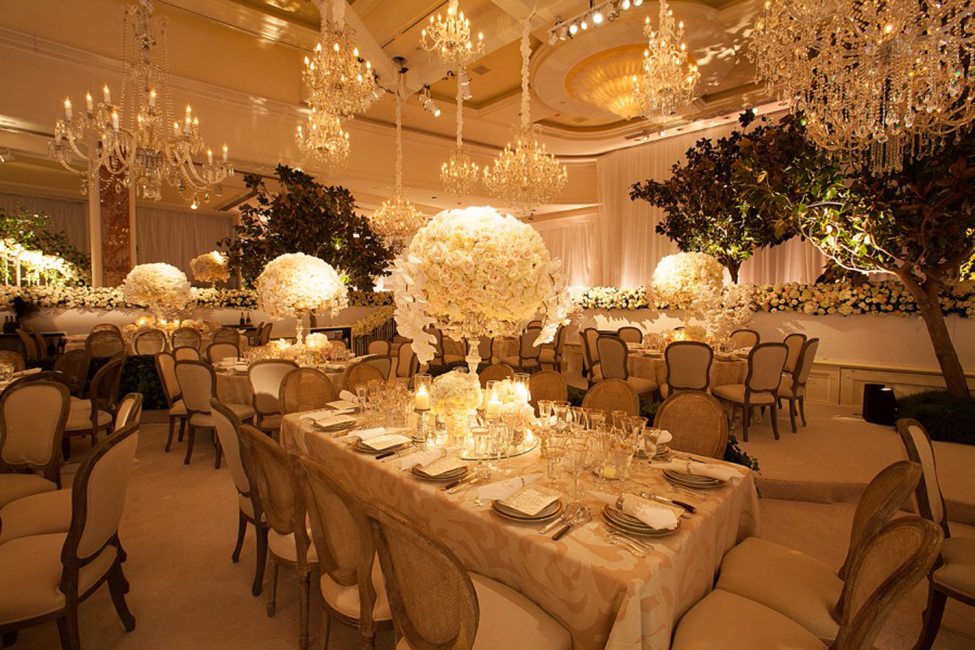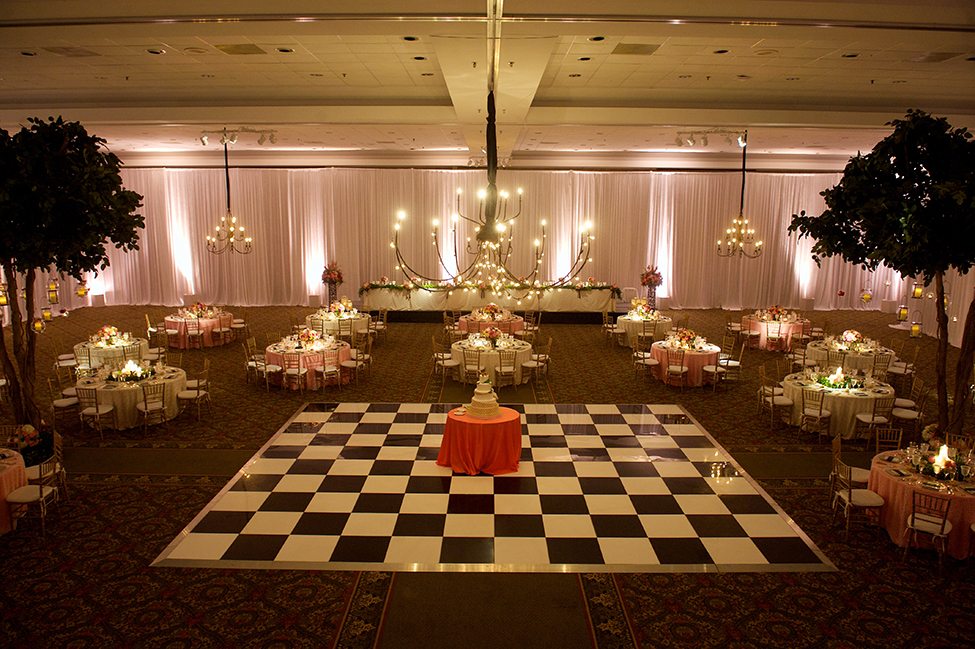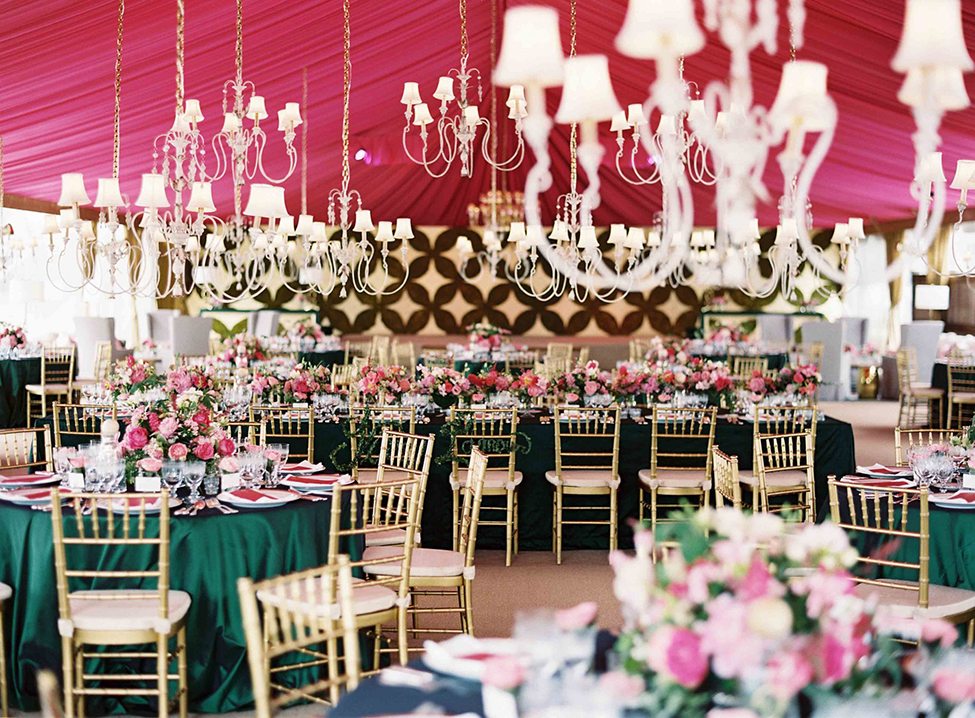the importance of lighting
When designing a space for a client, we put a lot of thought into the “big three”- draping, linens and lighting. These three things alone can be the most transformative to a space and also provide the biggest impact and wow factor if done just right. When looking at lighting specifically, we like to classify lighting into the following categories: Perimeter, Spot, Task and Overhead.
Image via Jen Kroll Photography, Event Design by A Day in May Events
Perimeter Lighting– Simply put, these are lights that are placed around the perimeter of a tent or interior space. For most of our events, we use perimeter lighting to provide a soft, ambient glow in the room. As the sun sets on the event at an outdoor, tented location, the perimeter lighting brightness is slowly increased, enveloping the room in warmth. Colored gels (thin sheets of polycarbonate or polyester, placed in front of a lighting fixture in the path of the beam; thanks Wikipedia) can be added to the fixtures to coordinate with the overall event décor and soften the glow even further.
Image by Jose Villa, Event Design by Mindy Weiss Party Consultants
Spot Lighting– We’re all familiar with spot lighting from a theatrical or on-stage application, but we’re here to tell you that we also use spot lights for the majority of our events (albeit the beam is a bit smaller and doesn’t follow the target). These static fixtures are placed appropriately to illuminate the centers of tables. If used correctly, spot lighting fixtures enhance the centerpiece décor and make the table appear to be illuminated from within. Spot lighting can also be used to draw attention to important accent pieces- menu boards, wall décor, shelving displays, etc.
Photo by Jen Kroll Photography, Event Design by A Day in May Events
Task Lighting– You guessed it; task lighting is used and needed to complete a task. In your home, think of the lamp on your end table that helps you to read your favorite book or magazine. In an event application, task lighting often applies to food and beverage staff and the “back of house” areas. You wouldn’t be expected to work without the appropriate lighting, so why would your vendors? Task lighting isn’t pretty- most of the time it’s placed in areas that are not visible to guests- but it’s necessary. After all, I don’t think you’d be pleased if the red pepper coulis- prepared to accompany your pan seared trout- and the fresh summer strawberry sauce- created for your miniature cheesecakes- got mixed up in the kitchen all because the caterer did not have enough lighting to properly perform the task at hand.
Image by Tec Petaja, Event Design by Calder Clark
Overhead Lighting– Looking to make an impact or provide a fun, decorative accent? Then you’ll love incorporating overhead lighting into your event space. There are so many products available that the options are truly endless. From nautical inspired, rope wrapped chandeliers to traditional, stately gold metal chandeliers, there is sure to be an overhead lighting option that suits your event style. Perhaps you’re having trouble finding exactly what you’re looking for; big box stores like West Elm, Crate & Barrel, World Market and other online sources like Etsy and Wayfair host a treasure-trove of lighting pieces.
Image by Jen Kroll Photography, Event Design by A Day in May Events
The different types of lighting each have a purpose. When combined together at an event, lighting can transform the space from drab to fab by further enhancing and drawing attention to all of the beautiful details that are so important to you (amazingly beautiful, moody photos are an added perk!).
In case you missed them, you might find our posts on the fundamentals of interior design and selecting an event venue helpful as well! Happy Planning!





